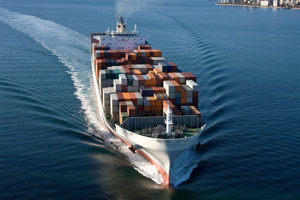Haldor Topsoe joins ambitious sustainable fuel project in Denmark
The project aims to develop a ground-breaking hydrogen and sustainable fuel facility based on electrolysis in the Greater Copenhagen Area. The project is expected to be executed by 2030 in three stages, achieving the capacity of 10 megawatts (MW) in 2023, 250 MW in 2027, and 1,3 GW in 2030 respectively. The partnership consists of leading Danish companies covering the whole value chain for the production, distribution, and consumption of renewable hydrogen and sustainable fuels.
“For sustainable fuels to become competitive with fossil fuels, technologies must be matured and ultimately become available and proven on an industrial scale. Partnerships like this are the way to achieve that. Topsoe contributes to this transition with the necessary carbon emission reduction technologies, particularly within efficient hydrogen production from solid oxide cell electrolysis (SOEC) and proven technologies to produce sustainable fuels like jet fuel, ammonia, and methanol, which are in focus in this project,” says Roeland Baan, Topsoe’s CEO.
Topsoe has recently joined the project and the partners, Ørsted, Copenhagen Airports, A. P. Moller – Maersk, DSV Panalpina, DFDS, SAS, Nel, and Everfuel. Together, the partnering companies cover the whole value chain for renewable hydrogen and sustainable fuels. Topsoe will contribute with know-how about technologies that convert captured CO2 into sustainable methanol and jet fuel using hydrogen from electrolysis of water.
Apart from a triple-digit million investment from the companies within the project, the partners have applied for substantial funding from Innovation Fund Denmark.
The project, expected to be finalized by 2030, will be located in the Greater Copenhagen Area and executed in three stages. The first stage, which could be operational by as early as 2023, will comprise a 10 MW electrolysis plant producing renewable hydrogen for trucks and potentially buses. By 2027, the stage two facility equipped with a 250 MW electrolysis plant will combine the production of renewable hydrogen with capture of CO2 from combustion of municipal waste or biomass to produce renewable methanol for maritime vessels and renewable jet fuel for planes.
Stage three will upgrade the electrolysis plant’s capacity to 1.3 GW and capture more CO2.
With the large-scale supply of renewable electricity needed, the timing of phases two and three will depend on the execution of the offshore wind power project off the island of Bornholm in Denmark.
Topsoe’s involvement in world-scale projects to reduce carbon emissions also includes delivering ammonia technology for the world’s largest green hydrogen production facility sited in NEOM, Saudi Arabia. The recently announced NEOM project will produce 650 tons per day of carbon-free hydrogen to power buses and trucks around the world.

- ADNOC Gas awards $2.1 B in contracts to enhance LNG supply infrastructure
- U.S. Department of the Treasury releases final rules for clean hydrogen production tax credit
- Tecnimont to build waste-to-biogas plant to fuel local kitchens in India
- Indonesia regulator confirms disruption at bp's Tangguh LNG project
- Topsoe, Aramco sign JDA to advance low-carbon hydrogen solutions using eREACT™




Comments